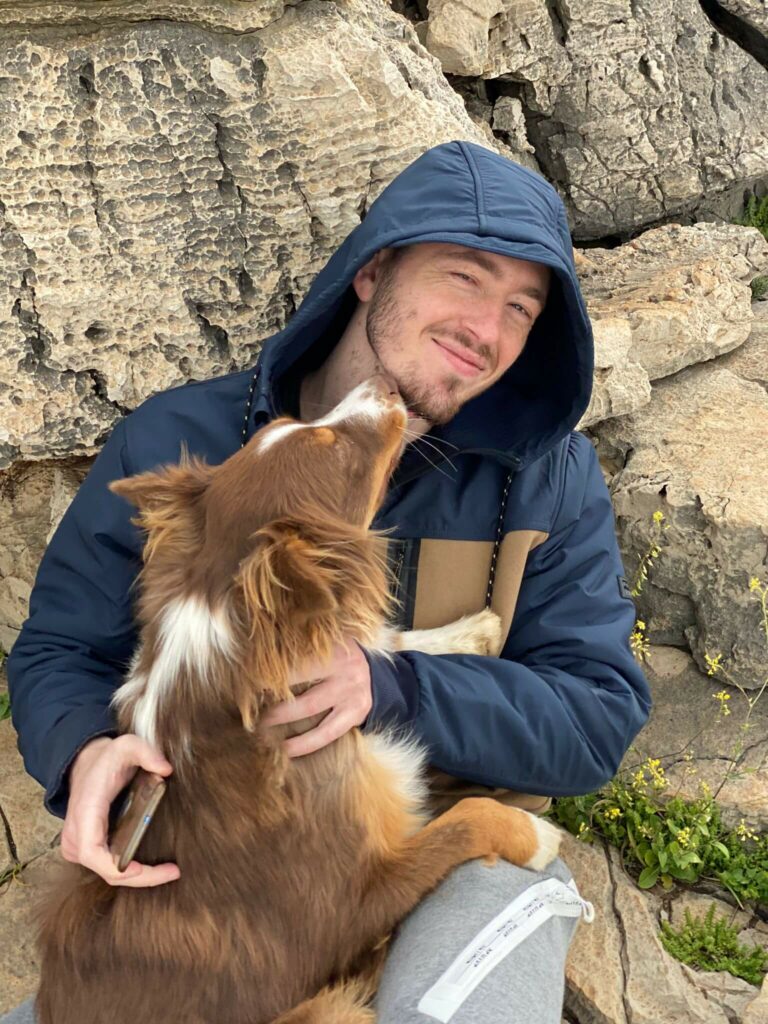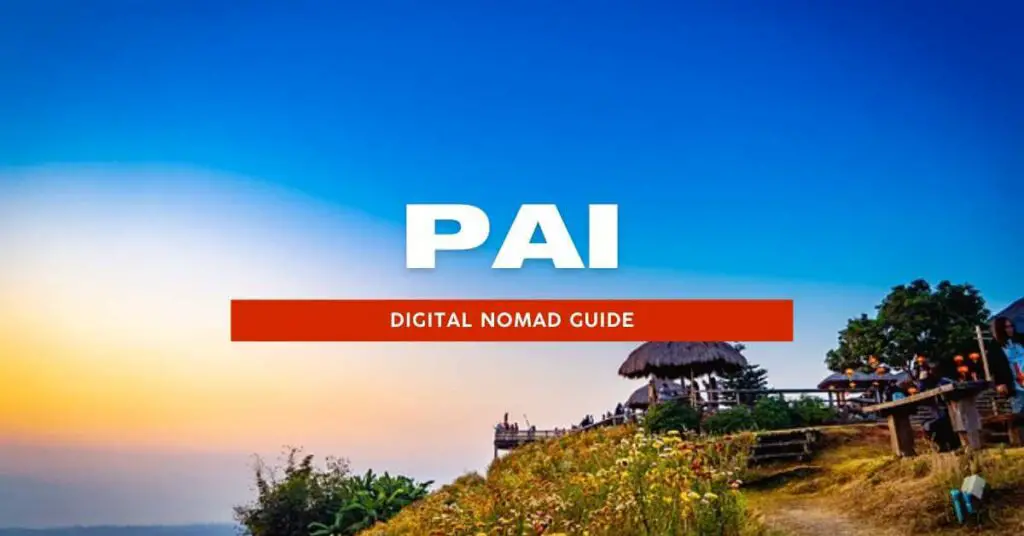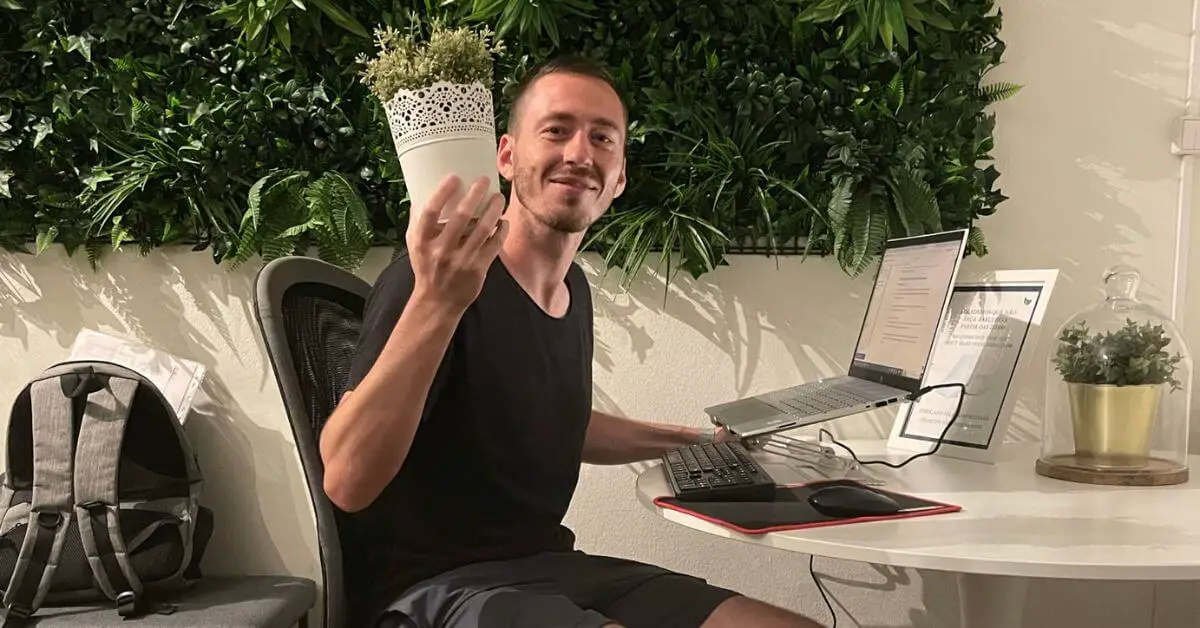Written by Christopher Ferrier
Working as a digital nomad can be an exciting and liberating experience, allowing you to work from anywhere in the world.
However, it’s common for digital nomads to showcase only their highlight reel on social media, creating an unbalanced and unrealistic view of the nomadic lifestyle.
Just like anything else, neglect can lead to suffering, and our mental health is no exception. It’s important to remember that the digital nomad lifestyle has its’ ups and downs, and taking care of our mental well-being should always be a top priority.
This blog post will talk about the parts of the nomad lifestyle that make our mental health suffer and the 4 pillars of wellness that have actionable methods to improve any areas that are lacking.
Table of Contents
ToggleChallenges
Loneliness
One of the challenges that digital nomads face is loneliness. Unlike traditional office jobs, digital nomads may not have a regular group of colleagues or friends to interact with, leading to a sense of isolation. Human beings have an innate need for social connection. Research has shown that social isolation and loneliness can have negative effects on our physical and mental health. A study published in the Journal of Health and Social Behaviour found that social isolation and loneliness are associated with increased mortality risk and can be as damaging to health as smoking 15 cigarettes a day.
Sources:
- Prolonged Social Isolation and Loneliness are Equivalent to Smoking 15 Cigarettes A Day
- Loneliness Rivals Obesity, Smoking as Health Risk
Burnout
Burnout is another serious consequence of the digital nomad lifestyle, as the freedom to work from anywhere can make it difficult to switch off from work. The constant accessibility to work emails and client communication can lead to an inability to set boundaries and take time for oneself.
When you light a candle from both ends, it burns faster, and the flame becomes more intense. Similarly, when you push yourself too hard and try to do too much, you burn out quickly, and the intensity of your work and stress levels increases. However, just like the candle, this intensity, and increased workload are not sustainable. Eventually, you will reach a breaking point, and your body and mind will force you to stop and rest.
At this point, you may need a more extended period to recover and get back to your healthy baseline, which negates the gains that you made during that period of high intensity.
Related: Why do You need To Set Healthy Boundaries at Work?
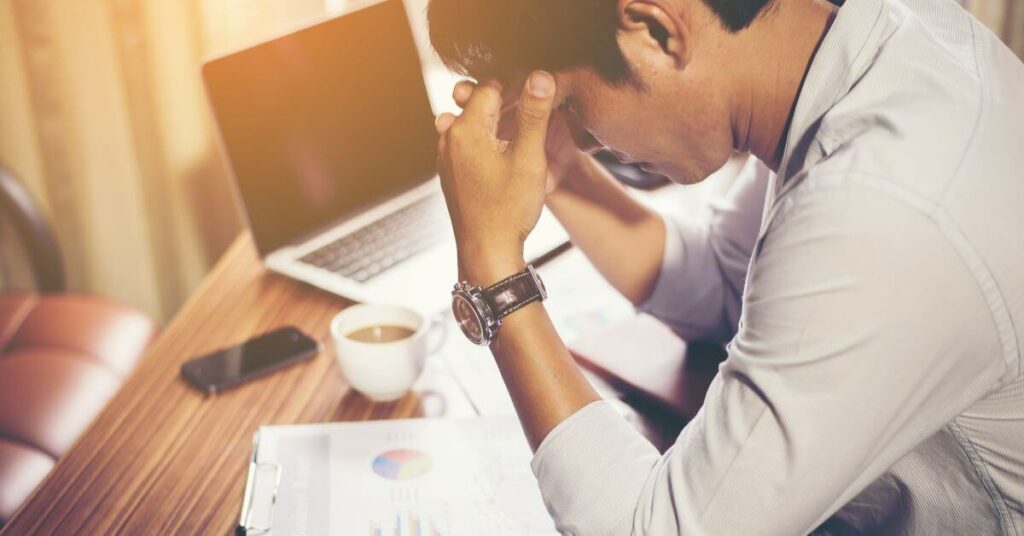
Lack of routine
Lastly, a lack of routine can have a significant impact on the mental health of digital nomads. The nomadic lifestyle, with its constant travel, changing time zones, and absence of a stable home base, can lead to a sense of instability and uncertainty. While the lack of a fixed location is one of the most attractive aspects of remote work, it can also be one of the most challenging. Without the structure and predictability of a daily routine, it can be difficult to maintain healthy habits, such as regular exercise and healthy eating, and to establish a sense of work-life balance. The resulting stress and anxiety can take a toll on mental well-being.
Related:
The good news
While the nomadic lifestyle can present challenges to mental health, there are numerous steps that digital nomads can take to optimize their well-being and thrive in their travels. By implementing simple, actionable strategies, digital nomads can cultivate healthy habits, prioritize self-care, and establish a sense of balance and routine in their lives.
There are four pillars of wellness that can help to counteract the negative effects of loneliness, burnout, and lack of routine and support a happier, healthier, and more fulfilling nomadic experience.
Physical health
The first and perhaps the easiest pillar to manage is your physical health. Taking care of your physical body can involve several key practices, with exercise, nutrition, and sleep being three of the most important factors to consider.
Exercise
The term “exercise” often conjures up images of grueling treadmill sessions or weightlifting in a gym, which can discourage individuals who have a negative association with exertion.
However, the key to maintaining a consistent exercise routine is to find a physical activity that you enjoy. There are countless ways to exercise, ranging from swimming to hiking to yoga to dance classes. The possibilities are endless, and the key is to discover an activity that genuinely engages and excites you.
By doing so, you can transform exercise from a dreaded chore into an enjoyable and rewarding experience. The bottom line is that exercise doesn’t have to be tedious or arduous; it can be something you look forward to and find pleasure in.
When we exercise, our bodies release endorphins, which are hormones that promote feelings of happiness and reduce stress. This chemical reaction can help us manage the negative emotions that contribute to burnout. Exercise also provides an opportunity to disconnect from work or other stressors and focus on our physical health, which can provide a mental break and promote relaxation.
Related: How To Keep Fit While Traveling.
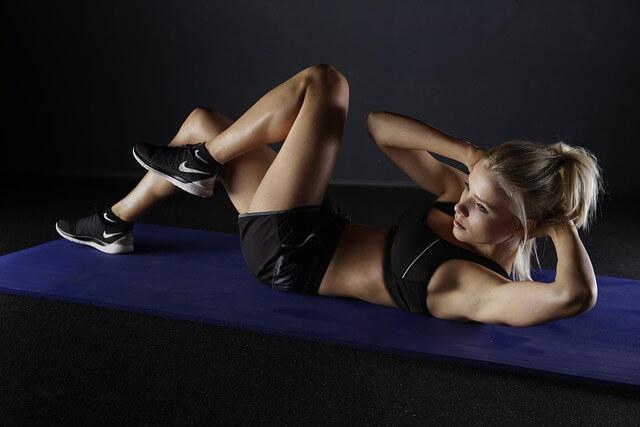
Nutrition
Nutrition is the next part of the physical health pillar and can be a challenging one to maintain, especially when traveling.
From an evolutionary standpoint, we are programmed to seek out high-calorie foods and consume them until there’s nothing left. Maybe an empty tub of ice cream sounds familiar? This instinctive behavior was developed millions of years ago to help us survive during times of famine.
Today, food is more abundant than ever before, but our prehistoric brains haven’t quite caught up with this new reality. The problem with our innate desire for high-calorie foods is that they are often low in nutritional quality and will leave you unfilled and craving more.
One of the most practical things you can do to break the cycle of eating empty calories and craving more is to focus on eating foods with a higher nutritional value. A simple way to do this is to “eat the rainbow” by adding more colorful fruits and vegetables to your plate. If your plate is full of dark and dull colors, it’s likely to be filled with highly processed foods that are low in nutritional value. On the other hand, a plate filled with a variety of colorful fruits and vegetables is likely to be more diverse and nutrient dense.
By eating a wide range of plant-based foods, you’ll be getting more nutritional bang for your buck. These foods will help to keep you feeling full and satisfied whilst reducing your cravings for less healthy options like ice cream and sugary snacks.
Incorporating more colorful fruits and vegetables into your diet doesn’t have to be difficult or time-consuming. Simple changes like adding a side salad to your meals or snacking on raw vegetables can make a big difference. So, the next time you are grocery shopping or planning your meals, think about how you can “eat the rainbow” and prioritize foods that are packed with nutrients and flavor.

Sleep
If there was a magic pill that could increase your creativity, productivity, mood, and motivation to maintain your wellness, how many would you order? Most likely, a lot!
Getting enough quality sleep could provide you with those benefits and more. Often, our worst decisions around our health and wellness come from a lack of rest. When we’re tired, our brains become lazy and make decisions based on high rewards for a little action, leading to poor food choices or skipping the gym.
That’s why getting enough quality sleep is crucial to our health and wellness journey. While there’s a myth that adults need eight hours of sleep each night, the truth is that we’re all different. Some people may feel rested after just four hours of sleep, while others need ten hours. It’s important to have self-awareness around how much sleep you need and strive to maintain a consistent sleep schedule.
One way to tell if you’re getting enough quality sleep is by how easy it is to get out of bed in the morning. If you’re hitting the snooze button and need a cup of coffee before you’re bearable to be around, it’s likely that you’re not getting enough rest.
If there is only one thing you take away from this blog post to improve your health and wellness, this is number one. Try to go to sleep and wake up at the same time each day. Set yourself up for success by prioritizing sleep as your number one wellness practice.
Read my 13 Lessons I Learned About Happiness And Wealth.
Emotional Health
Emotional health refers to our ability to understand and manage our feelings in a healthy way, allowing us to handle stress, form positive relationships, and maintain a positive outlook on life.
As already discussed, remote work can often lead to isolation and a lack of social interaction, which can impact emotional health and how we view the world. Emotional health is a crucial pillar of overall wellness that is often overlooked.
Maintaining emotional health is easier when we have people to talk to and confide in. Whether it’s family, friends, or a support group, having a network of people who we can turn can help us process our emotions and gain perspective.
Sometimes, we may not even realize what we feel until we verbalize it to someone else. Have you noticed after having a conversation with a loved one, there is a sense of clarity and lightness? The reason for this is you have subconsciously organized and processed the situation. Next time you encounter a difficult situation, instead of suppressing it, try to speak with someone you trust and see how different you feel before and after the conversation.
If you don’t have a support network or find it hard to open up, you can still maintain your emotional health. One way to recognize and process your emotions on your own is through journaling, which involves putting your thoughts on paper to create distance between yourself and your emotions.
Here’s an actionable guide to starting a journaling practice:
- Choose a journal: Find a journal that you like and that inspires you. It can be a plain notebook or a beautiful journal with a design that speaks to you. Make sure it’s something you enjoy using and want to write in every day.
- Set a schedule: Decide on a regular time to journal each day. It could be first thing in the morning, at night before bed, or during your lunch break. The important thing is to make it a consistent habit so that it becomes a natural part of your routine.
- Create a comfortable space: Find a quiet and comfortable place to write where you won’t be distracted. This could be a cozy corner of your home, a park bench, or a quiet café. Make sure it’s a space where you feel relaxed and inspired to write.
- Start small: When you’re first starting out, don’t feel like you need to write pages and pages. Start with just a few sentences or a paragraph about how you’re feeling, what’s on your mind, or something you’re grateful for. Over time, you can increase the length of your entries.
Mindfulness/Meditation
Mindfulness meditation is a powerful tool for developing self-awareness and promoting emotional health. Contrary to popular belief, it is not about sitting in silence and suppressing thoughts and emotions. Instead, it involves observing thoughts and emotions without judgment, allowing them to come and go without becoming entangled in them.
For example, when faced with a stressful situation, such as arriving in a new city and feeling anxious, mindfulness meditation can help you stay calm and make rational decisions.
By cultivating the ability to observe your thoughts and emotions without getting caught up in them, you can maintain a sense of inner calm and respond to the situation more effectively. With a regular mindfulness meditation practice, you can develop greater self-awareness, emotional regulation, and resilience, improving your overall well-being.
Here’s an easy grounding technique to improve mindfulness:
- Find a comfortable seated position: Sit in a comfortable chair with your feet flat on the ground and your hands resting on your lap.
- Take a few deep breaths: Take a few deep breaths, inhaling through your nose and exhaling through your mouth. Allow your breath to become slow and steady.
- Notice your body: Begin to bring your attention to your body. Notice the sensation of your feet on the ground, the weight of your body on the chair, and the feel of your clothing against your skin.
- Name what you see: Look around and name three things you see in your immediate environment. For example, you might notice a lamp, a book, and a plant.
- Name what you hear: Next, name three things you can hear. It might be the sound of a clock ticking, the hum of a refrigerator, or the rustling of leaves outside.
- Name what you feel: Finally, name three things you can feel physically. It might be the sensation of your feet on the ground, the warmth of the sun on your skin, or the softness of your clothing
By using this grounding technique. You can bring yourself into the present moment and cultivate a sense of calm and relaxation.
There is plenty of material online on different meditation techniques and apps, such as “Headspace” which can introduce you to meditation in a beginner-friendly way.
By focusing on your breath and observing your thoughts without judgment, you can become more aware of your emotions and respond to the situation with greater clarity.

Spiritual Health
Spiritual health refers to the state of being connected to something greater than oneself, having a sense of purpose, and living in accordance with one’s values and beliefs. It involves finding meaning, hope, and inner peace in life.
Achieving spiritual health can be more challenging than the other pillars discussed because it involves finding a sense of purpose and connection beyond oneself.
While there is no one-size-fits-all approach to improving spiritual health, one effective way is to start serving someone or something outside of yourself. Start by reflecting on your values and beliefs to identify causes or activities that resonate with you, such as volunteering at an animal rescue center if you’re passionate about animal welfare.
By connecting with something greater than yourself, you can find meaning, hope, and inner peace in life.
If you have read this far, it can be assumed that you are someone who deeply cares about your health and wellness. Question yourself on why this is important to you. Is it so you can make more money, gain more status or be X?
This might be the case, but the overarching reason you wish to improve is likely to be the connection you have to the world around you. Therefore, even though spiritual health is one of the most complicated, it’s the very reason we do anything good or bad.
Mental Health
The last pillar is mental health, and this is really a combination of everything you have read up to now.
Good mental health involves taking care of your physical body, managing your emotions, and finding a sense of purpose. It’s unrealistic to expect to excel in all areas of your life at all times, but it’s important to be aware of how each aspect of your life affects your mental health.
If you can’t control a particular aspect of one of the pillars, don’t let it affect the others. For instance, if you have an important deadline coming up, it’s understandable that you may need to work long hours, and this may be somewhat out of your control.
However, you can control what you eat to ensure you’re getting nutritious food to fuel your body and mind. Or in another example, travel can disrupt your daily routine, but staying connected with your loved ones can help you maintain your mental well-being. As a nomad, you may face challenges that are out of your control, but focusing on what you can control can help you maintain good mental health.
Conclusion
As a digital nomad, it is essential to understand that the lifestyle can have its ups and downs. Loneliness, burnout, and lack of routine can be factors that cause many of the downs. By building positive habits stacked around the four pillars of health, you can significantly improve your mental health and overall health. This will enable you to deal with the negatives and reap the rewards that come with the nomadic lifestyle, of which there are many.
Behind the Scenes: How did this article come about?
Let me introduce you to Chris, an amazing individual I met while working remotely at Pai.
We were both working from the same coffee shop, and Chris approached me after noticing the SEO sticker on my laptop, which reads, “I LOVE SEO.”
Our conversation quickly turned into a fascinating discussion about life, happiness, and Chris’s passion for helping people improve their mental health and wellness.
As I was on my way back to my hostel after parting ways with Chris, I reflected on our conversation and realized that his experience and knowledge could be beneficial to other digital nomads who may be experiencing stress or a decline in mental health. That’s when the idea came to me!
I asked Chris to share his insights on the blog, and he responded with an excellent article that I’m sure will be incredibly helpful.
So, thank you, Chris, for sharing your wisdom and expertise with us. You truly are an inspiration!
About Chris:
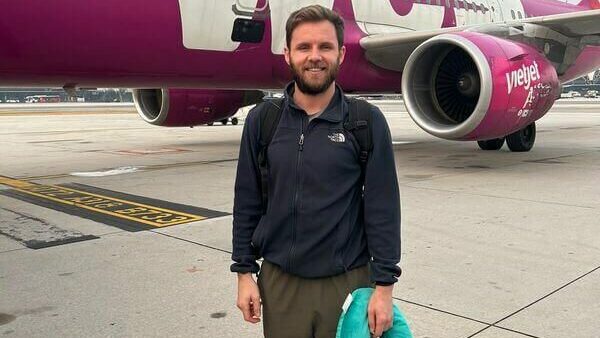
Hello there, I’m Chris. I recently made the brave decision to leave my corporate job to focus on what truly matters to me: helping others achieve better mental health and wellness. As someone who has struggled with mental health issues for years, I know firsthand the pain and suffering that can come with a poor relationship with yourself.
However, my journey to self-improvement during the COVID-19 pandemic taught me that we all have the power to transform our lives. Over the past three years, I’ve dedicated myself to personal growth and development, prioritizing my health using many of the tools outlined below. The results have been nothing short of exponential.
I’m now on a mission to share my knowledge and passion for mental health with others and to help them achieve the same level of growth and fulfillment that I have. So if you’re ready to take ownership of your life and make positive changes, this blog has you covered. I hope you enjoy reading it as much as I enjoyed writing it.

- Improve your digital nomad skills
- Become a Digital Nomad
- To be my friend


